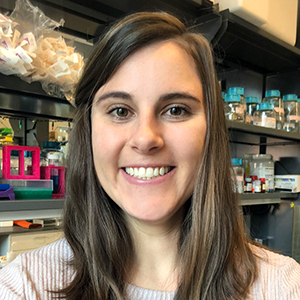Cholesterol Education Month 2021
While cholesterol may have a bad rep, it is necessary for human health — it gives your body the building blocks it needs to make cells, hormones and vitamins. Cholesterol becomes a problem when there's too much of it circulating in your bloodstream. As cholesterol levels increase, so does the risk for developing diseases such as heart disease and stroke, two leading causes of death in the U.S.
Around 10% of adults in the U.S. have high total cholesterol levels. Much research has focused on better understanding how cholesterol is made and trafficked in our body, oftentimes with the goal of developing better diagnostic tools and treatments to prevent disease. Here, I’ve rounded up some of the most recent research on cholesterol in honor of Cholesterol Education Month.
Gene variants that impair cholesterol clearance
High density lipoprotein and its primary receptor, called scavenger receptor class B type I, or SR-BI, work together to clear excess cholesterol from the bloodstream, thus protecting against fatty plaque buildup in the arteries. Humans have different genetic variants of SR-BI, some of which have been identified in patients with high levels of HDL and cholesterol. Researchers from Medical College of Wisconsin recently published their work on a specific SR-BI variant associated with cardiovascular disease in the Journal of Lipid Research. They found that this variant, which has a cysteine residue at amino acid position 174 instead of an arginine and is thus called R174C-SR-BI, had impaired cholesterol transport in monkey cells. If these results translate to humans, this variant could be a risk factor for impaired cholesterol clearance and cardiovascular disease. Genetic screening may help physicians better identify patients with this variant and develop better treatment plans.
What bears can tell us about cholesterol
Recent insights into cholesterol research focused on an unexpected group of fuzzy animals — bears. Specifically, Swedish brown bears. Earlier this year, ASBMB Today's Arti Dumbrepatil wrote about how a team of researchers compared human and bear lipoproteins to try to understand why hibernating bears can withstand elevated levels of cholesterol and triglycerides without developing clogged arteries, whereas humans can’t. Their research, also published in the Journal of Lipid Research, found that bear lipoproteins differ in structure and function, which results in less binding to the walls of arteries and thus less fatty plaque buildup. To learn more, read Dumbrepatil's article.
Reducing cholesterol to block viruses
While cholesterol may be important for our health, it’s also important for the life cycle of other, more nefarious entities. Some types of viruses, called enveloped viruses, emerge from infected human cells in cholesterol-rich lipid rafts. (SARS-CoV-2 is an enveloped virus.) Lowering the levels of cellular cholesterol can impede this process, reducing the ability of these viruses to spread and survive. Researchers from the University of Michigan recently described how an enzyme located to the endoplasmic reticulum, called viperin, exerts its antiviral effects by downregulating cholesterol biosynthesis. After expression, viperin forms a complex with key cholesterol biosynthesis enzymes lanosterol synthetase and squalene monooxygenase. Formation of this complex correlates with a reduction in total cellular cholesterol, possibly through inhibition of those key enzymes, thus preventing of viral budding. This research, published in the Journal of Biological Chemistry, points to control of cholesterol biosynthesis as a means for cells to protect themselves against enveloped viruses.
Enjoy reading ASBMB Today?
Become a member to receive the print edition monthly and the digital edition weekly.
Learn moreGet the latest from ASBMB Today
Enter your email address, and we’ll send you a weekly email with recent articles, interviews and more.
Latest in Science
Science highlights or most popular articles

Small protein plays a big role in viral battles
Nef, an HIV accessory protein, manipulates protein expression in extracellular vesicles, leading to improved understanding of HIV-1 pathogenesis.

Genetics studies have a diversity problem that researchers struggle to fix
Researchers in South Carolina are trying to build a DNA database to better understand how genetics affects health risks. But they’re struggling to recruit enough Black participants.

Scientists identify new function of learning and memory gene common to all mammalian brain cells
Findings in mice may steer search for therapies to treat brain developmental disorders in children with SYNGAP1 gene mutations.

From the journals: JBC
Biased agonism of an immune receptor. A profile of missense mutations. Cartilage affects tissue aging. Read about these recent papers.

Cows offer clues to treat human infertility
Decoding the bovine reproductive cycle may help increase the success of human IVF treatments.

Immune cells can adapt to invading pathogens
A team of bioengineers studies how T cells decide whether to fight now or prepare for the next battle.

